-
Executive Summary
-
Market Introduction
-
Market Definition
-
Scope of the Study
-
Market Structure
-
Research Methodology
-
Primary Research
-
Secondary Research
-
Market Capacity Estimation
-
Forecast Model
-
List of Assumptions
-
Limitations of the Study
-
Market Insights
-
Market Dynamics
-
Introduction
-
Market Drivers
-
Market Restraints
-
Market Opportunities
-
Porter’s Five Forces Analysis
- Threat of New Entrants
- Bargaining Power of Buyers
- Bargaining Power of Suppliers
- Threat of Substitutes
- Intensity of Rivalry
-
Value Chain/Supply Chain Analysis
-
Global Automotive Evaporative Emission Control System (EVAP) Market, by Part
-
Introduction
-
Fuel Tank
- Market Estimates & Forecast, 2020–2027
- Market Estimates & Forecast, by Region, 2020–2027
-
Vent Hoses
- Market Estimates & Forecast, 2020–2027
- Market Estimates & Forecast, by Region, 2020–2027
-
Purge Valve/Sensor
- Market Estimates & Forecast, 2020–2027
- Market Estimates & Forecast, by Region, 2020–2027
-
EVAP Canister
- Market Estimates & Forecast, 2020–2027
- Market Estimates & Forecast, by Region, 2020–2027
-
Fuel Tank Pressure Sensor
- Market Estimates & Forecast, 2020–2027
- Market Estimates & Forecast, by Region, 2020–2027
-
Liquid-vapor Separator
- Market Estimates & Forecast, 2020–2027
- Market Estimates & Forecast, by Region, 2020–2027
-
Fuel Level Sensor
- Market Estimates & Forecast, 2020–2027
- Market Estimates & Forecast, by Region, 2020–2027
-
Gas Cap
- Market Estimates & Forecast, 2020–2027
- Market Estimates & Forecast, by Region, 2020–2027
-
Global Automotive Evaporative Emission Control System (EVAP) Market, by Vehicle Type
-
Introduction
-
Passenger Vehicle
- Market Estimates & Forecast, 2020–2027
- Market Estimates & Forecast, by Region, 2020–2027
-
Light Commercial Vehicle
- Market Estimates & Forecast, 2020–2027
- Market Estimates & Forecast, by Region, 2020–2027
-
Heavy Commercial Vehicle
- Market Estimates & Forecast, 2020–2027
- Market Estimates & Forecast, by Region, 2020–2027
-
Two-wheelers
- Market Estimates & Forecast, 2020–2027
- Market Estimates & Forecast, by Region, 2020–2027
-
Global Automotive Evaporative Emission Control System (EVAP) Market, by Distribution Channel
-
Introduction
-
OEM
- Market Estimates & Forecast, 2020–2027
- Market Estimates & Forecast, by Region, 2020–2027
-
Aftermarket
- Market Estimates & Forecast, 2020–2027
- Market Estimates & Forecast, by Region, 2020–2027
-
Global Automotive Evaporative Emission Control System (EVAP) Market, by Region
-
Introduction
-
North America
- Market Estimates & Forecast, by Part, 2020–2027
- Market Estimates & Forecast, by Vehicle Type, 2020–2027
- Market Estimates & Forecast, by Distribution Channel, 2020–2027
- Market Estimates & Forecast, by Country, 2020–2027
- US
- Canada
- Mexico
-
Europe
- Market Estimates & Forecast, by Part, 2020–2027
- Market Estimates & Forecast, by Vehicle Type, 2020–2027
- Market Estimates & Forecast, by Distribution Channel, 2020–2027
- Market Estimates & Forecast, by Country, 2020–2027
- Germany
- UK
- France
- Italy
- Rest of Europe
-
Asia-Pacific
- Market Estimates & Forecast, by Part, 2020–2027
- Market Estimates & Forecast, by Vehicle Type, 2020–2027
- Market Estimates & Forecast, by Distribution Channel, 2020–2027
- Market Estimates & Forecast, by Country, 2020–2027
- China
- Japan
- India
- Rest of Asia-Pacific
-
Rest of the World
- Market Estimates & Forecast, by Part, 2020–2027
- Market Estimates & Forecast, by Vehicle Type, 2020–2027
- Market Estimates & Forecast, by Distribution Channel, 2020–2027
-
Competitive Landscape
-
Competitive Scenario
-
Competitive Benchmarking of the Global Automotive Evaporative Emission Control System (EVAP) Market
-
Major Growth Key Strategies in the Global Automotive Evaporative Emission Control System (EVAP) Market
-
Market Share Analysis: Global Automotive Evaporative Emission Control System (EVAP) Market
-
Product Development in Global Automotive Evaporative Emission Control System (EVAP) Market
-
Mergers and Acquisitions in the Global Automotive Evaporative Emission Control System (EVAP) Market
-
Contracts and Agreements in the Global Automotive Evaporative Emission Control System (EVAP) Market
-
Expansions and Investments in Global Automotive Evaporative Emission Control System (EVAP) Market
-
Company Profile
-
SenTec Group (Switzerland)
- Company Overview
- Products/Services Offered
- Financial Overview
- Key Developments
- Key Strategies
- SWOT Analysis
-
The Plastic Omnium Group (France)
- Company Overview
- Products/Services Offered
- Financial Overview
- Key Developments
- Key Strategies
- SWOT Analysis
-
Eagle Industry Co., Ltd. (Japan)
- Company Overview
- Products/Services Offered
- Financial Overview
- Key Developments
- Key Strategies
- SWOT Analysis
-
Delphi Technologies (UK)
- Company Overview
- Products/Services Offered
- Financial Overview
- Key Developments
- Key Strategies
- SWOT Analysis
-
TI Automotive (UK)
- Company Overview
- Products/Services Offered
- Financial Overview
- Key Developments
- Key Strategies
- SWOT Analysis
-
Plastic Fuel Systems (China)
- Company Overview
- Products/Services Offered
- Financial Overview
- Key Developments
- Key Strategies
- SWOT Analysis
-
Didac International (India)
- Company Overview
- Products/Services Offered
- Financial Overview
- Key Developments
- Key Strategies
- SWOT Analysis
-
Padmini VNA Mechatronics Pvt Ltd (India)
- Company Overview
- Products/Services Offered
- Financial Overview
- Key Developments
- Key Strategies
- SWOT Analysis
-
Stant Corporation (Indiana)
- Company Overview
- Products/Services Offered
- Financial Overview
- Key Developments
- Key Strategies
- SWOT Analysis
-
Robert Bosch GmbH (Germany)
- Company Overview
- Products/Services Offered
- Financial Overview
- Key Developments
- Key Strategies
- SWOT Analysis
-
Okay Motor Products Hangzhou Inc. (China)
- Company Overview
- Products/Services Offered
- Financial Overview
- Key Developments
- Key Strategies
- SWOT Analysis
-
Standard Motor Products Inc. (US)
- Company Overview
- Products/Services Offered
- Financial Overview
- Key Developments
- Key Strategies
- SWOT Analysis
-
List of Tables
-
Global Automotive Evaporative Emission Control System (EVAP) Market, by Region, 2020–2027 (USD Million)
-
North America Automotive Evaporative Emission Control System (EVAP) Market, by Country, 2020–2027 (USD Million)
-
Europe Automotive Evaporative Emission Control System (EVAP) Market, by Country, 2020–2027 (USD Million)
-
Asia-Pacific Automotive Evaporative Emission Control System (EVAP) Market, by Country, 2020–2027 (USD Million)
-
Rest of the World Automotive Evaporative Emission Control System (EVAP) Market, by Country, 2020–2027 (USD Million)
-
Global Automotive Evaporative Emission Control System (EVAP) Market, by Part, 2020–2027 (USD Million)
-
North America Automotive Evaporative Emission Control System (EVAP) Market, by Part, 2020–2027 (USD Million)
-
Europe Automotive Evaporative Emission Control System (EVAP) Market, by Part, 2020–2027 (USD Million)
-
Asia-Pacific Automotive Evaporative Emission Control System (EVAP) Market, by Part, 2020–2027 (USD Million)
-
Rest of the World Automotive Evaporative Emission Control System (EVAP) Market, by Part, 2020–2027 (USD Million)
-
Global Automotive Evaporative Emission Control System (EVAP) Market, by Vehicle Type, 2020–2027 (USD Million)
-
North America Automotive Evaporative Emission Control System (EVAP) Market, by Vehicle Type, 2020–2027 (USD Million)
-
Europe Automotive Evaporative Emission Control System (EVAP) Market, by Vehicle Type, 2020–2027 (USD Million)
-
Asia-Pacific Automotive Evaporative Emission Control System (EVAP) Market, by Vehicle Type, 2020–2027 (USD Million)
-
Rest of the World Automotive Evaporative Emission Control System (EVAP) Market, by Vehicle Type, 2020–2027 (USD Million)
-
Global Automotive Evaporative Emission Control System (EVAP) Market, by Distribution Channel, 2020–2027 (USD Million)
-
North America Automotive Evaporative Emission Control System (EVAP) Market, by Distribution Channel, 2020–2027 (USD Million)
-
Europe Automotive Evaporative Emission Control System (EVAP) Market, by Distribution Channel, 2020–2027 (USD Million)
-
Asia-Pacific Automotive Evaporative Emission Control System (EVAP) Market, by Distribution Channel, 2020–2027 (USD Million)
-
Rest of the World Automotive Evaporative Emission Control System (EVAP) Market, by Distribution Channel, 2020–2027 (USD Million)
-
Global Automotive Evaporative Emission Control System (EVAP) Market: by Region, 2020–2027 (USD Million)
-
North America Automotive Evaporative Emission Control System (EVAP) Market, by Country, 2020–2027 (USD Million)
-
North America Automotive Evaporative Emission Control System (EVAP) Market, by Part, 2020–2027 (USD Million)
-
North America Automotive Evaporative Emission Control System (EVAP) Market, by Vehicle Type, 2020–2027 (USD Million)
-
North America Automotive Evaporative Emission Control System (EVAP) Market, by Distribution Channel, 2020–2027 (USD Million)
-
US Automotive Evaporative Emission Control System (EVAP) Market, by Part, 2020–2027 (USD Million)
-
US Automotive Evaporative Emission Control System (EVAP) Market, by Vehicle Type, 2020–2027 (USD Million)
-
North America Automotive Evaporative Emission Control System (EVAP) Market, by Distribution Channel, 2020–2027 (USD Million)
-
Canada Automotive Evaporative Emission Control System (EVAP) Market, by Part, 2020–2027 (USD Million)
-
Canada Automotive Evaporative Emission Control System (EVAP) Market, by Vehicle Type, 2020–2027 (USD Million)
-
Canada Automotive Evaporative Emission Control System (EVAP) Market, by Distribution Channel, 2020–2027 (USD Million)
-
Mexico Automotive Evaporative Emission Control System (EVAP) Market, by Part, 2020–2027 (USD Million)
-
Mexico Automotive Evaporative Emission Control System (EVAP) Market, by Vehicle Type, 2020–2027 (USD Million)
-
Mexico Automotive Evaporative Emission Control System (EVAP) Market, by Distribution Channel, 2020–2027 (USD Million)
-
Europe Automotive Evaporative Emission Control System (EVAP) Market, by Country, 2020–2027 (USD Million)
-
Europe Automotive Evaporative Emission Control System (EVAP) Market, by Part, 2020–2027 (USD Million)
-
Europe Automotive Evaporative Emission Control System (EVAP) Market, by Vehicle Type, 2020–2027 (USD Million)
-
Europe Automotive Evaporative Emission Control System (EVAP) Market, by Distribution Channel, 2020–2027 (USD Million)
-
Germany Automotive Evaporative Emission Control System (EVAP) Market, by Part, 2020–2027 (USD Million)
-
Germany Automotive Evaporative Emission Control System (EVAP) Market, by Vehicle Type, 2020–2027 (USD Million)
-
Germany Automotive Evaporative Emission Control System (EVAP) Market, by Distribution Channel, 2020–2027 (USD Million)
-
UK Automotive Evaporative Emission Control System (EVAP) Market, by Part, 2020–2027 (USD Million)
-
UK Automotive Evaporative Emission Control System (EVAP) Market, by Vehicle Type, 2020–2027 (USD Million)
-
UK Automotive Evaporative Emission Control System (EVAP) Market, by Distribution Channel, 2020–2027 (USD Million)
-
France Automotive Evaporative Emission Control System (EVAP) Market, by Part, 2020–2027 (USD Million)
-
France Automotive Evaporative Emission Control System (EVAP) Market, by Vehicle Type, 2020–2027 (USD Million)
-
France Automotive Evaporative Emission Control System (EVAP) Market, by Distribution Channel, 2020–2027 (USD Million)
-
Italy Automotive Evaporative Emission Control System (EVAP) Market, by Part, 2020–2027 (USD Million)
-
Italy Automotive Evaporative Emission Control System (EVAP) Market, by Vehicle Type, 2020–2027 (USD Million)
-
Italy Automotive Evaporative Emission Control System (EVAP) Market, by Distribution Channel, 2020–2027 (USD Million)
-
Rest of Europe Automotive Evaporative Emission Control System (EVAP) Market, by Part, 2020–2027 (USD Million)
-
Rest of Europe Automotive Evaporative Emission Control System (EVAP) Market, by Vehicle Type, 2020–2027 (USD Million)
-
Rest of Europe Automotive Evaporative Emission Control System (EVAP) Market, by Distribution Channel, 2020–2027 (USD Million)
-
Asia-Pacific Automotive Evaporative Emission Control System (EVAP) Market, by Country, 2020–2027 (USD Million)
-
Asia-Pacific Automotive Evaporative Emission Control System (EVAP) Market, by Part, 2020–2027 (USD Million)
-
Asia-Pacific Automotive Evaporative Emission Control System (EVAP) Market, by Vehicle Type, 2020–2027 (USD Million)
-
Asia-Pacific Automotive Evaporative Emission Control System (EVAP) Market, by Distribution Channel, 2020–2027 (USD Million)
-
China Automotive Evaporative Emission Control System (EVAP) Market, by Part, 2020–2027 (USD Million)
-
China Automotive Evaporative Emission Control System (EVAP) Market, by Vehicle Type, 2020–2027 (USD Million)
-
China Automotive Evaporative Emission Control System (EVAP) Market, by Distribution Channel, 2020–2027 (USD Million)
-
Japan Automotive Evaporative Emission Control System (EVAP) Market, by Part, 2020–2027 (USD Million)
-
Japan Automotive Evaporative Emission Control System (EVAP) Market, by Vehicle Type, 2020–2027 (USD Million)
-
Japan Automotive Evaporative Emission Control System (EVAP) Market, by Distribution Channel, 2020–2027 (USD Million)
-
India Automotive Evaporative Emission Control System (EVAP) Market, by Part, 2020–2027 (USD Million)
-
India Automotive Evaporative Emission Control System (EVAP) Market, by Vehicle Type, 2020–2027 (USD Million)
-
India Automotive Evaporative Emission Control System (EVAP) Market, by Distribution Channel, 2020–2027 (USD Million)
-
Rest of Asia-Pacific Automotive Evaporative Emission Control System (EVAP) Market, by Part, 2020–2027 (USD Million)
-
Rest of Asia-Pacific Automotive Evaporative Emission Control System (EVAP) Market, by Vehicle Type, 2020–2027 (USD Million)
-
Rest of Asia-Pacific Automotive Evaporative Emission Control System (EVAP) Market, by Distribution Channel, 2020–2027 (USD Million)
-
Rest of the World Automotive Evaporative Emission Control System (EVAP) Market, by Country, 2020–2027 (USD Million)
-
Rest of the World Automotive Evaporative Emission Control System (EVAP) Market, by Part, 2020–2027 (USD Million)
-
Rest of the World Automotive Evaporative Emission Control System (EVAP) Market, by Vehicle Type, 2020–2027 (USD Million)
-
Rest of the World Automotive Evaporative Emission Control System (EVAP) Market, by Distribution Channel, 2020–2027 (USD Million)
-
List of Figures
-
Research Process of MRFR
-
Top-Down and Bottom-Up Approach
-
Market Dynamics
-
Impact Analysis: Market Drivers
-
Impact Analysis: Market Restraints
-
Porter’s Five Forces Analysis
-
Value Chain Analysis
-
Global Automotive Evaporative Emission Control System (EVAP) Market Share, by Part, 2020 (%)
-
Global Automotive Evaporative Emission Control System (EVAP) Market, by Part, 2020–2027 (USD Million)
-
Global Automotive Evaporative Emission Control System (EVAP) Market Share, by Vehicle Type, 2020 (%)
-
Global Automotive Evaporative Emission Control System (EVAP) Market, by Vehicle Type, 2020–2027 (USD Million)
-
Global Automotive Evaporative Emission Control System (EVAP) Market Share, by Distribution Channel, 2020 (%)
-
Global Automotive Evaporative Emission Control System (EVAP) Market, by Distribution Channel, 2020–2027 (USD Million)
-
North America Automotive Evaporative Emission Control System (EVAP) Market Share (%), 2020
-
North America Automotive Evaporative Emission Control System (EVAP) Market, by Country, 2020–2027 (USD Million)
-
Europe Automotive Evaporative Emission Control System (EVAP) Market Share (%), 2020
-
Europe Automotive Evaporative Emission Control System (EVAP) Market, by Country, 2020–2027 (USD Million)
-
Asia-Pacific Automotive Evaporative Emission Control System (EVAP) Market Share (%), 2020
-
Asia-Pacific Automotive Evaporative Emission Control System (EVAP) Market, by Country, 2020–2027 (USD Million)
-
Rest of the World Automotive Evaporative Emission Control System (EVAP) Market Share (%), 2020
-
Rest of the World Automotive Evaporative Emission Control System (EVAP) Market, by Country, 2020–2027 (USD Million)

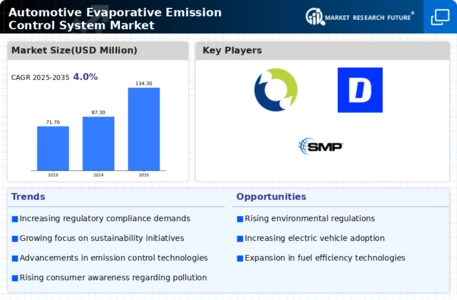
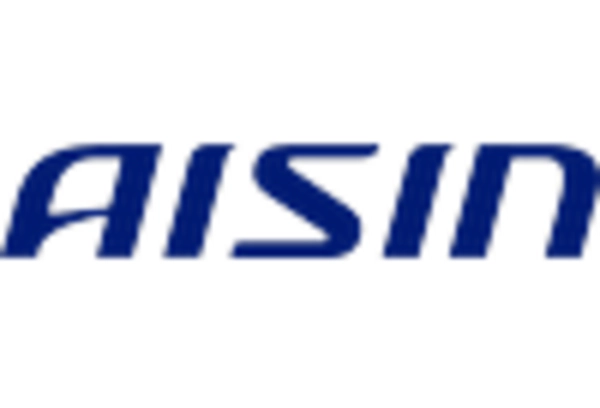
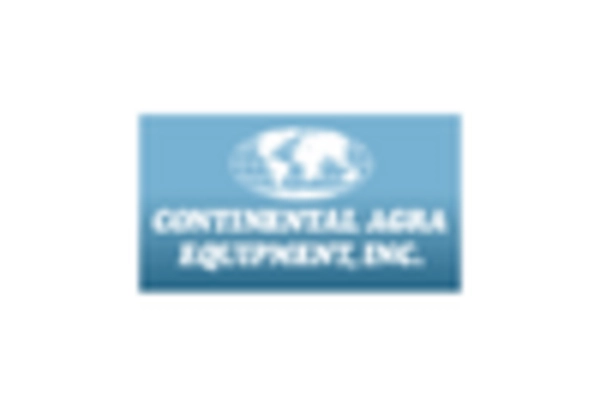
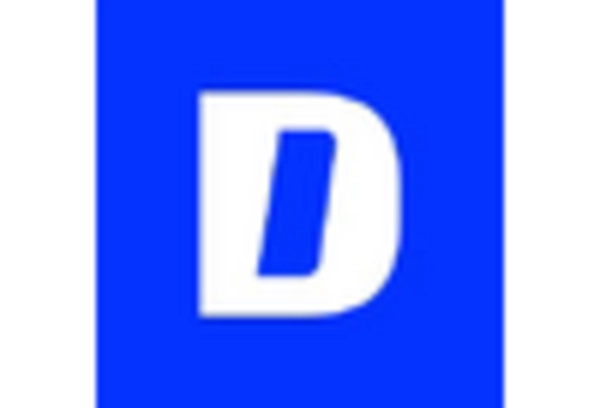
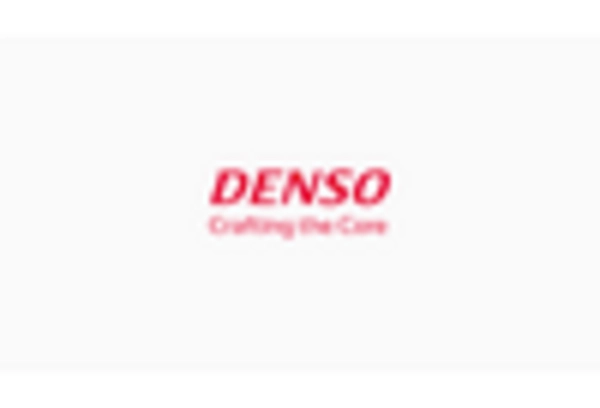
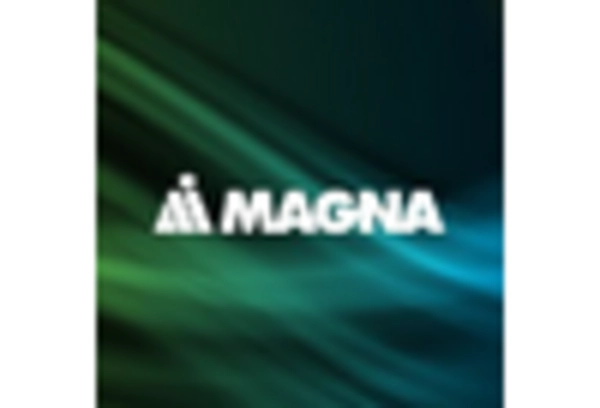
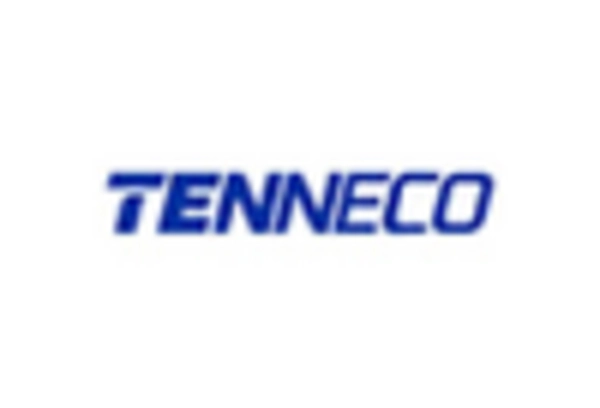









Leave a Comment